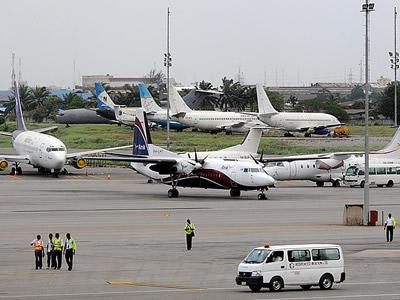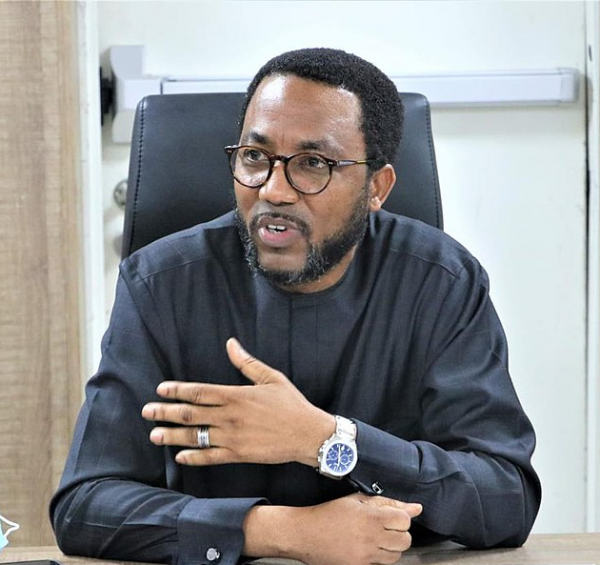Harmattan Season: Managing Flight Cancellations, delays
 There are a lot of parallels between what we’re doing and an expensive watch. It’s very complex, has a lot of parts and it only has value when it’s predictable and reliable.—Gordon Bethune
There are a lot of parallels between what we’re doing and an expensive watch. It’s very complex, has a lot of parts and it only has value when it’s predictable and reliable.—Gordon Bethune
Predictability here in the words of Gordone is the managerial skills expected of an astute administrator to forestall the recurrence of ugly past incidents as imminent in the Nigerian Aviation industry.
The harmattan period is here again, with its attendant dust haze which results in the delay, diversion and cancellation of flights nationwide due to poor visibility. Expectedly, the Nigerian Civil Aviation Authority (NCAA) has released its annual warning to airline operators and pilots reminding them of the “severe weather conditions that could pose threat to safe flights in the weeks ahead following the onset of the harmattan season”.
During this period, air travelers usually have tough times as most of them find it difficult to complete their journeys due to non-availability of flights, flight cancellations or delays that run to several days. Also, airlines are believed to incur a lot of loses due to the aforementioned problems year in year out. In fact, airlines losses can run into billions of naira each year following the onset of the harmattan season.
According to statistics, bad weather is by “far, the largest cause of air traffic delay in the National Airspace System. Bad weather causes about 69 percent of system impacting delays, while other factors like equipment failure, runway unavailability and others account for the remaining 35 percent.
For the NCAA, it has become an annual ritual to issue the warning at this period, and for the airlines it is the worst period in their operations as they wait for how the weather forecast would impact their daily operations as it is. NCAA said the warning had become important as harmattan is known to pose an obvious threat to aircraft particularly in areas of challenging terrains due to low visibility.
Also, the Nigerian Meteorological Services (NIMET) has reported that the prevailing weather condition is likely to herald a long and severe dust haze in the months ahead and pilots should note that air-to-ground visibility may be considerably reduced due to the dust haze.”
“The dust haze is a dry and dusty wind that blows southwards from the Sahara across Nigeria during the months of November to March.” This makes visual navigation extremely difficult or impossible and resultantly, where visibility falls below the prescribed weather minima, flight operations are expected to be delayed, diverted or out rightly cancelled, explained the regulatory authority.
The NCAA has continuously alerted airlines and passengers of the impact of harmattan haze to air travel. It has its minimum standard minimum visibility between 700 to 1000 feet depending on the airport.
However, experts have reasoned that the time has come for the regulatory body to specify what should be done to manage the effect of the dust haze on flight operations as well as look at the equipment of each airline and grant some of the airlines that have Next Generation aircraft the right to operate under low visibility, using the modern equipment in their aircraft.
But the snag really is on the navigational aids and equipment at the airports. Only four, out of the 22 airports in Nigeria have airfield lighting and these are the airports in Lagos, Abuja, Kano and Port Harcourt.
The sport light is now on the Nigerian Airspace Management Agency (NAMA) which has the responsibility to provide navigational aids and equipment that can enable the airlines operate flights even at zero visibility.
Even the Managing Director of NAMA, Captain Fola Akinkuoto , admits that flights can be operated even at zero visibility with the right kind of equipment as he stressed that there is infrastructure decay due to lack of maintenance culture and the will to move forward. He however stated that there has been significant improvement in the area of infrastructure in Nigeria in line with the global standard. He still posits that the country indeed needs to install modern aerospace infrastructure that will move the aviation industry forward.
Akinkuoto however said that there is also need to upgrade the Instrument Landing Systems to Category three to make them more adapt to handle current challenges of visibility and also for the airlines to also upgrade what they have on board their aircraft as well as train their pilots to be able to harness an upgrade in navigational aids and equipment.
While the country has what it needs to maintain the minimum standard in aviation infrastructure, there are still challenges in the area of airfield lighting systems, energy to power the existing equipment and security for the already installed infrastructure. Though there have been efforts made over the years to install airfield lighting at some airports in the country but such efforts end woefully as they were usually followed by scandals of huge sums of money diverted by government officials. This is not to say that the NCAA and NAMA cannot work together to solve this major problem always experienced during the harmattan period. It has often been said that the growth of the industry depends on the viability of the airlines, these agencies should consider the burden the existing airlines have to bear during this period and the money they lose as they have to bear the brunt of the cancellations and delays and work out the solution issue of dust haze as a way of moving the industry forward.
Copyright MMS Plus.
All rights reserved. This material, and other digital content on this website, may not be reproduced, published, broadcast, rewritten or redistributed in whole or in part without prior express written permission from KINGS COMMUNICATIONS LIMITED.







